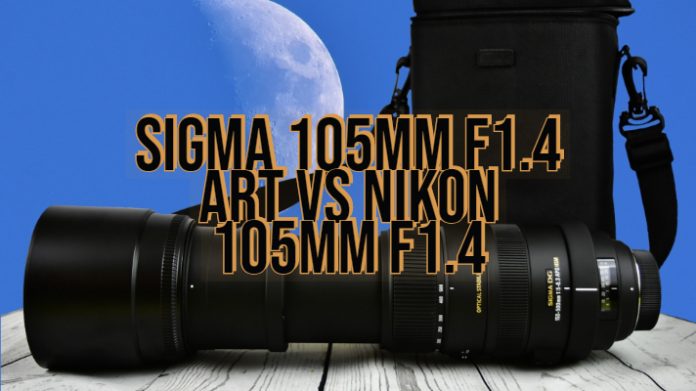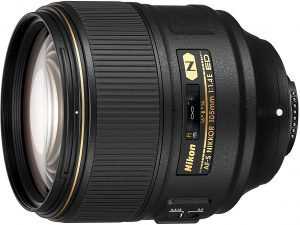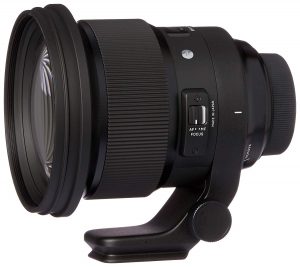Looking for a comparison between the Sigma 105mm F1.4 Art vs Nikon 105mm F1.4 portrait lenses?
The portrait lenses have always been one of the most difficult choices for a professional photographer. Today, we have selected two capable choices when it comes to portrait lenses. We will compare the Nikon 105mm F/1.4 with the Sigma 105 mm f/1.4 Art for arriving at the best results in term of efficient performance.
The Nikon 105 mm f/1.4 – An overview
One of the best lenses in the short telephoto lens market, the AF-S NIKKOR 105mm f/1.4E ED Lens has been a favorite choice for photography enthusiasts around the globe. The lens is designed to work with the FX-format F-mount DSLRs and offers you an excellent low light functionality.
The lens also comes with incredible control over the focus. Thus you have access to a shallow depth of field. The lens also comes with nanocrystal coating to provide you relief from ghosting and flare.
A few features we found interesting enough include
- Though the lens has been designed for the FX format, you can also use it for the cameras with DX format as well.
- The f/1.4 maximum aperture is faster enough and offers you precise control over the depth of field.
- It has been one of the excellent performers for the low light conditions.
- The lens is made of three extra-low dispersion glass elements for reducing chromatic aberration.
- The fluorine coating on the surface provides support against the damage to the optical system.
- The silent wave motor will ensure that you get faster and smoother autofocus that does not disturb your audio recording.
Sigma 105 mm f/1.4 Art – An Overview
The advanced optical layout and a bright maximum aperture are the two features that make the Sigma 105 mm f/1.4 Art an exceptional choice and a formidable competitor to the Nikon 105 mm f/1.4 lens.
It offers you the same set of benefits like the excellent functionality under low light conditions and extensive control over the depth of field. You can work efficiently with the isolation of the objects and using a selective focus. It uses FLD and SLD glasses to avoid or reduce the chromatic aberration. The lens also comes with the Super multi-layer coating for reducing and eliminating the lens flare and ghosting effects.
Some of the features that may make it a good choice can be summed up as here below –
- Part of the Sigma’s Global Vision series of the lenses, it offers you exceptional optical performance and thus suits the artistic or creative masterpieces.
- While specifically designed for the FX-format of the camera mount, it can also work with the DX format as well.
- The f/1.4 aperture is bright enough and works skillfully for the low light situations.
- You can exercise greater control over the focus and provides you with a shallow depth of field.
- It uses three F low dispersion glasses and two Special low dispersion glass elements for reducing the flare and chromatic aberrations.
- The lens should be an excellent option for the bokeh effects. The nine-blade diaphragm enhances the smoother and better bokeh functionality.
How do the lenses Compare? Sigma 105mm F1.4 Art vs Nikon 105mm F1.4
Well, from the above description – it should be evident that both the competing lenses come with an almost similar degree of compatibility, features, and functionality. However, there are a few minor differences that may make them slightly stay apart.
To begin with, the Sigma 105 mm f/1.4 Art is less expensive when you compare it to the Nikon 105 mm f/1.4. We have observed the price difference of around $ 500 to $ 600. If you are on a budget and still looking for a good quality of performance from your portrait lens, the Sigma offering should be an ideal choice for your needs.
The Sigma 105 mm lens is a more robust option when compared to the Nikon lens. It weighs almost double than the Nikon lens. This can be one of the reasons you may hesitate buying this lens, especially if you value portability as one of the crucial factors.
When it comes to letting in more light into the lens, the Nikon lens offers you better functionality and for the same image and exposure – it will let more light. One of the things we noticed from the usability point of view was that the Nikon lens has a focusing ring that can be moved quickly enough, while that on the Sigma lens felt somewhat tighter.
Tabular Comparison: Sigma 105mm F1.4 Art vs Nikon 105mm F1.4
A side by side comparison between the two lenses should ideally help you make the right decision concerning which lens would you want to go with. We will compare the features so that you can make it a perfect choice between the two.
| Features | Nikon 105 mm f/1.4 [amazon_link asins=’B01J4S9YRI’ template=’PriceLink’ store=’foi04-20′ marketplace=’US’ link_id=’9151b896-3222-4b70-8e04-01d578d9d1eb’] | Sigma 105 mm f/1.4 [amazon_link asins=’B07D9YGP5S’ template=’PriceLink’ store=’foi04-20′ marketplace=’US’ link_id=’f11ece96-0832-47f4-9cb2-19efd137f98a’] |
| Focal Length | 105 mm | 105 mm |
| Camera mount | Nikon F | Nikon F |
| Angle of view | 23°10′ degrees | 23.3 degrees |
| Minimum focal distance | 1 m | 1 m |
| Lens construction | 14 elements in 9 groups | 17 elements in 12 groups |
| Diaphragm | Nine rounded blades | Nine rounded blades |
| Filter thread | 82 mm | 105 mm |
| Physical dimensions | 94.5 x 106 mm | 115.9 x 131.5 mm |
| Weight | 985 grams | 1640 grams |
As can be seen from the above comparison table and the discussion we have had above – it should be clear enough that the two lenses offer you the same kind of functionality regarding their features and construction.
The Concluding Thoughts
Ultimately, based on what we could find from our time with the lenses and the specifications thereof, we fond that both the glasses come with the similar level of functionality and features, and produced an almost identical degree of image quality. The deciding factors, therefore, should ideally be the price which differs by nearly $600 and the weight of the lenses.
Which among those two lenses would you prefer for your experiments with the low light photography? Do share your expectations and experiences if any with these two competing capable f/1.4 lenses.



